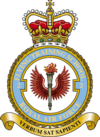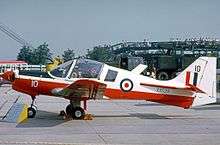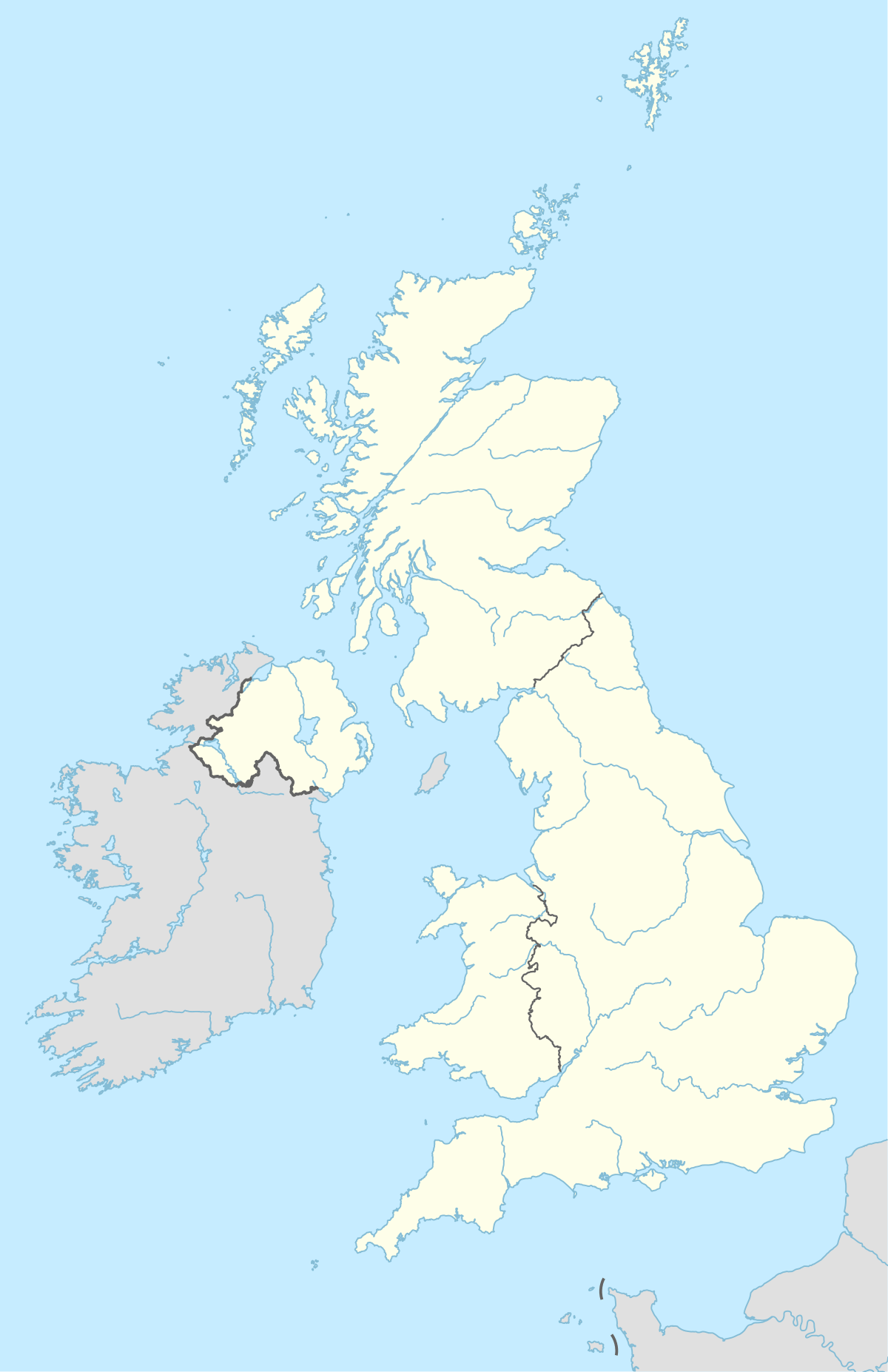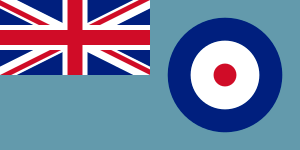No. 2 Flying Training School RAF
| No. 2 Flying Training School | |
|---|---|
 No. 2 Flying Training School Badge | |
| Active |
26 Apr 1920 - 15 Dec 1933 1 Oct 1934 - 3 Sept 1939 3 Sept 1939 - 14 Mar 1942 23 Jul 1947 - 1 May 1952 1 Feb 1953 - Dec 1966 Dec 1966 - 16 Jan 1970 16 Jan 1970 - 2 Dec 1974 31 Mar 1976 - 30 Mar 1997 31 Jan 2014 - |
| Country |
|
| Branch |
|
| Role | Glider training |
| Part of | No. 22 (Training) Group |
| Headquarters | RAF Syerston |
| Motto(s) |
Verbum sat Sapienti (Latin for A word to the wise is sufficient) |
| Aircraft | Grob Viking TX1 and Grob Vigilant T1 |
| Website | https://www.raf.mod.uk/rafsyerston/ |
| Commanders | |
| Current commander | Group Captain John Middleton OBE BA RAFR |
| Notable commanders | Arthur Tedder, 1st Baron Tedder |
No.2 Flying Training School is a Flying Training School (FTS) of the Royal Air Force (RAF). It is part of No. 22 (Training) Group that delivers flying training to the Air Training Corps. Its headquarters is located at RAF Syerston, Nottinghamshire. The RAF Central Gliding School and twenty five Volunteer Gliding Squadrons are under its command. No. 2 FTS is also the operating authority for Little Rissington and Kenley airfields. Throughout its history, No. 2 FTS has had various roles including being the first military flying school to use jet-powered aircraft throughout pilot training.
History
First formation
No. 2 Flying Training School (FTS) was first formed at RAF Duxford[1] in No. 3 Group on 26 April 1920 from No. 31 Training Squadron, with a special flight attached to carry out research for the Professor of Aeronautical Services at University of Cambridge. At the end of August 1921 the school was transferred to No. 1 Group but returned to No. 3 Group on 1 July 1923. Initially equipped with Avro 504Ks and Ns for basic training, it used Airco DH.9As, Bristol F.2Bs and Sopwith Snipes for service training. The 504s were eventually replaced by the Avro Tutor, whereas Armstrong Whitworth Siskins and Gloster Grebes replaced the Snipes. The school ceased operations on 29 July 1933 and disbanded on 15 December at RAF Digby, where it had moved on 30 June 1924.
Second formation
The school reformed on 1 October 1934 in No. 23 Group at its previous home of Digby, now equipped with Tutors for basic training and Hawker Harts and Furies for the service training phase. In 1936 Hawker Audaxes were added and in September 1937 the school moved to RAF Brize Norton, to move it away from the likely area of operations in the event of a war. By August 1939, basic flying training was being carrying out at civilian run Elementary and Reserve Flying Training Schools and the FTSs were concentrating on the service flying phase of training. To that end it was equipped with Harvards and Airspeed Oxfords.
With the outbreak of the Second World War on 3 September 1939, the school’s title was changed to No. 2 Service Flying Training School (SFTS) and on 24 June 1940 it was reclassified as a Group II school concentrating on twin engined training with Oxfords. By 1942 the Commonwealth Air Training Plan was in full swing and most aircrew were being trained up to SFTS level in Canada, South Africa or Southern Rhodesia, before arriving in or returning to Britain. It was therefore decided to convert the SFTSs to (Pilot) or (Observer) Advanced Flying Units. These units would concentrate on training personnel arriving from overseas in the techniques and conditions of flying in a blacked-out northern Europe. As a result, No. 2 SFTS became No. 2 (Pilots') Advanced Flying Unit on 14 March 1942.
Third formation
On 23 July 1947, No. 20 FTS at RAF Church Lawford was re-designated No. 2 FTS and on 6 April 1948 it moved to RAF South Cerney. It was equipped with de Havilland Tiger Moths and Harvards but in June 1949 the Tiger Moths were replaced by Percival Prentices. However, the school did not last long as it was re-designated as Central Flying School (Basic) on 1 May 1952.
Fourth & Fifth formations

As a result of the Korean War there was an increase in demand for pilots and No. 2 FTS re-formed on 1 March 1953 at RAF Cluntoe in Northern Ireland, with Prentices and Harvards. It moved to RAF Hullavington on 1 June 1954, equipped with Percival Provosts and Chipmunks, but in 1955 became the first school in the world to offer ab-initio training on jet aircraft when it introduced the BAC Jet Provost T.1 to a selected group of students. The experiment led the way to the introduction of the Jet Provost to all RAF FTSs. On 18 November 1957 the school moved to RAF Syerston and in December became No. 2 (Basic) FTS, until it disbanded on 16 January 1970. However, the same day the Primary Flying School at RAF Church Fenton was renamed No. 2 FTS. Equipped with Chipmunks, a Bulldog section was added in 1973 which operated as the Royal Navy Elementary Flying Training School (RNEFTS). No. 2 FTS disbanded on 2 December 1974, although the RNEFTS transferred to the control of No. 1 FTS at RAF Linton-on-Ouse.
Sixth formation
On 31 March 1976, the school was reformed as No. 2 (Advanced) Flying Training School at RAF Ternhill to give advanced training to helicopter pilots. On 8 October 1976, it moved to RAF Shawbury to become No. 2 FTS once again, where it took over control of the Central Air Traffic Control School as well as continuing to train helicopter pilots and crewman at both basic and advanced levels. On 30 March 1997, No. 2 FTS was disbanded and was replaced at Shawbury by the civilian operated Defence Helicopter Flying School which now trains helicopter pilots for all three British armed services.[2]
Operations
No. 2 FTS reformed at RAF Syerston on 31 January 2014 to take control of the Royal Air Force's Volunteer Gliding Squadrons and the Central Gliding School from No. 3 Flying Training School. The unit is commanded by a Group Captain in Full Time Reserve Service (FTRS), the first full-time flying appointment given to an officer of that rank.[3]
Controversy
In April 2014, three months after reforming, all gliding operations were 'paused' due to airworthiness concerns of the Grob Viking conventional glider and Grob Vigilant motorglider.[4] Almost two years later, on 10 March 2016, the Ministry of Defence (MOD) announced it would drastically reduce and relaunch gliding provision within the Air Cadet Organisation.[5] The MOD's relaunch was heavily criticised.[6][7][8] The nationwide fleet is to be reduced to 73 Viking TX1s and 15 Vigilant T1s, from a former total of 146 aircraft. The units struck through in the following section are to close.[5]
Headquarters No. 2 FTS was heavily criticised for not communicating the plans to withdraw the Vigilant T1 from service and the restructuring resulting in closure of many volunteer gliding squadrons.[9] Criticism was also voiced with respect to its retention policy of volunteer personnel, management of its contracted maintenance organization, failure to achieve continued airworthiness management organisation approval during two years of non-flying[10], limited recovery of aircraft, and the approach for acquiring Part Task Trainers with grants from the RAF Charitable Trust.
No. 2 FTS Units

Royal Air Force Central Gliding School (RAF Syerston)
- CGS provide instructor training and standardisation both from their base at RAF Syerston and on visits to squadrons. The RAF Central Gliding School is co-located with HQ No. 2 FTS and the Gliding Examining Wing of the Central Flying School.
Viking TX1 Squadrons (Conventional)
- 614 VGS (MDPGA Wethersfield)
- 615 VGS (RAF Kenley)
- 621 VGS (RAF Hullavington) to move to Duke of Gloucester Barracks, South Cerney
- 622 VGS (Trenchard Lines)
- 626 VGS (RNAS Predannack)
- 644 VGS (RAF Syerston)
- 661 VGS (RAF Kirknewton)
662 VGS (RM Condor)
Vigilant T1 Squadrons (Motor Glider)
611 VGS (RAF Honington)612 VGS (Dalton Barracks)613 VGS (RAF Halton)616 VGS (RAF Henlow)618 VGS (RAF Odiham)624 VGS (RMB Chivenor)- 631 VGS (RAF Woodvale)
- 632 VGS (RAF Ternhill)
633 VGS (RAF Cosford)634 VGS (MOD St. Athan)635 VGS (RAF Topcliffe)636 VGS (Swansea Airport)- 637 VGS (RAF Little Rissington)
642 VGS (RAF Linton-on-Ouse)- 645 VGS (RAF Topcliffe)
663 VGS (RAF Kinloss)664 VGS (Newtownards)
References
Citations
- ↑ March, Peter R. (1998). Brace by Wire to Fly-by-Wire: 80 Years of the Royal Air Force 1918-1998. Bader House, RAF Fairford, Gloucester, England: RAF Benevolent Fund Enterprises. p. 168. ISBN 1-899808-06-X.
- ↑ Lake 1999, p. 104.
- ↑ "New Gliding School Launches for Air Cadets". Air Cadets. Retrieved 14 December 2014.
- ↑ "Duty Holder Advice Notice" (PDF). HQ 2 FTS. Retrieved 17 April 2014.
- 1 2 "Air Cadet Aviation Relaunch:Written statement - HCWS605". MoD. Retrieved 10 March 2016.
- ↑ "Would-be pilots grounded as Air Cadets axe half their flying squadrons". Daily Mail. Retrieved 19 March 2016.
- ↑ "Air cadet cuts will see more than half of squadrons axed". Telegraph. Retrieved 19 March 2016.
- ↑ "New funding initiative for Air Cadet aircraft needed" (PDF). The Honourable Company of Air Pilots. Retrieved 7 August 2016.
- ↑ "Social Media Site". Facebook.
- ↑ "Continued Airworthiness Management Organisation Initial Approval Audit Report" (PDF). Military Aviation Authority. Retrieved 11 May 2016.
Bibliography
- Lake, A (1999). Flying units of the RAF. Shrewsbury: Airlife. ISBN 1-84037-086-6.
External links
| Wikimedia Commons has media related to No. 2 Flying Training School. |
- Flying Training Schools, Air of Authority.
